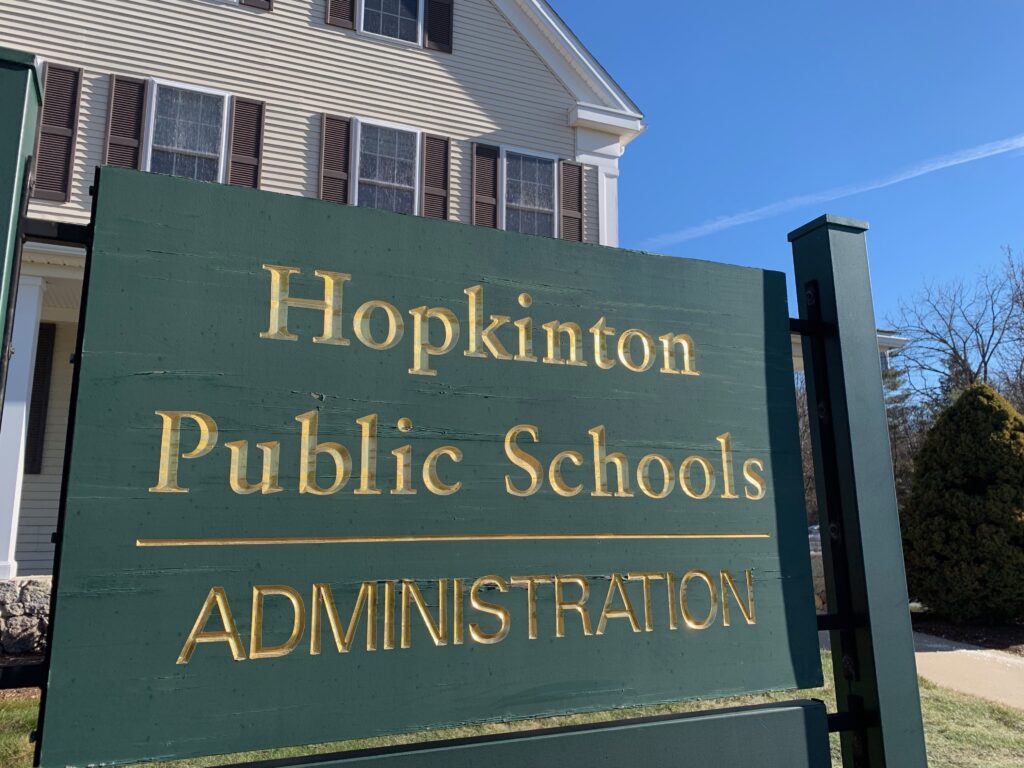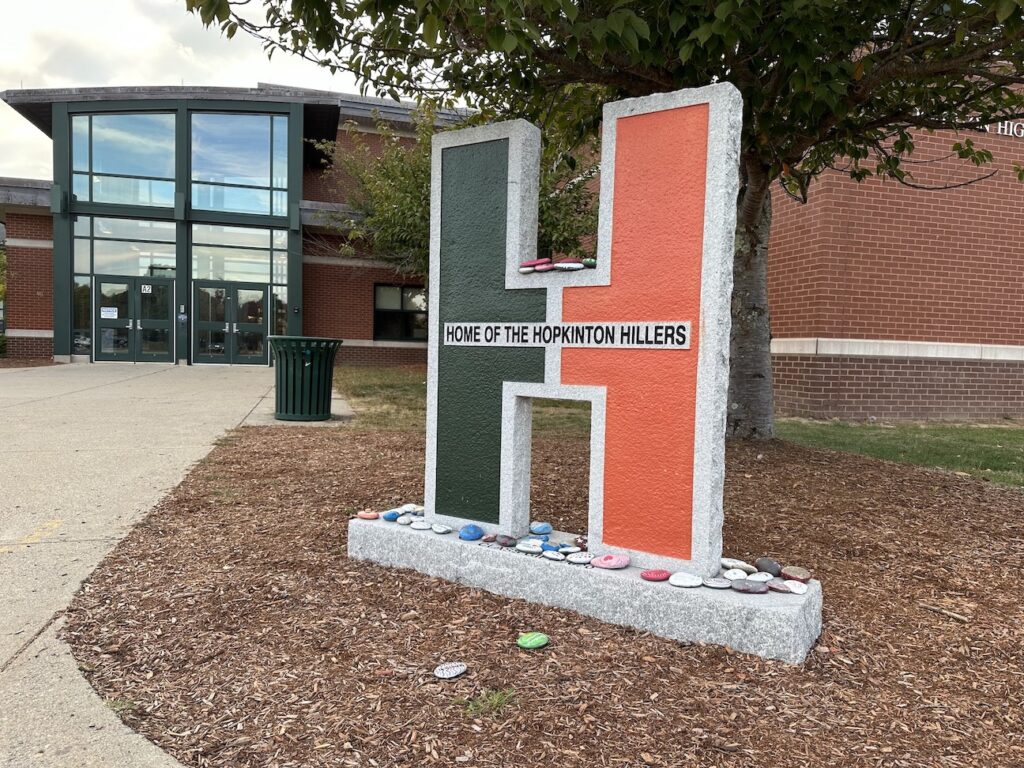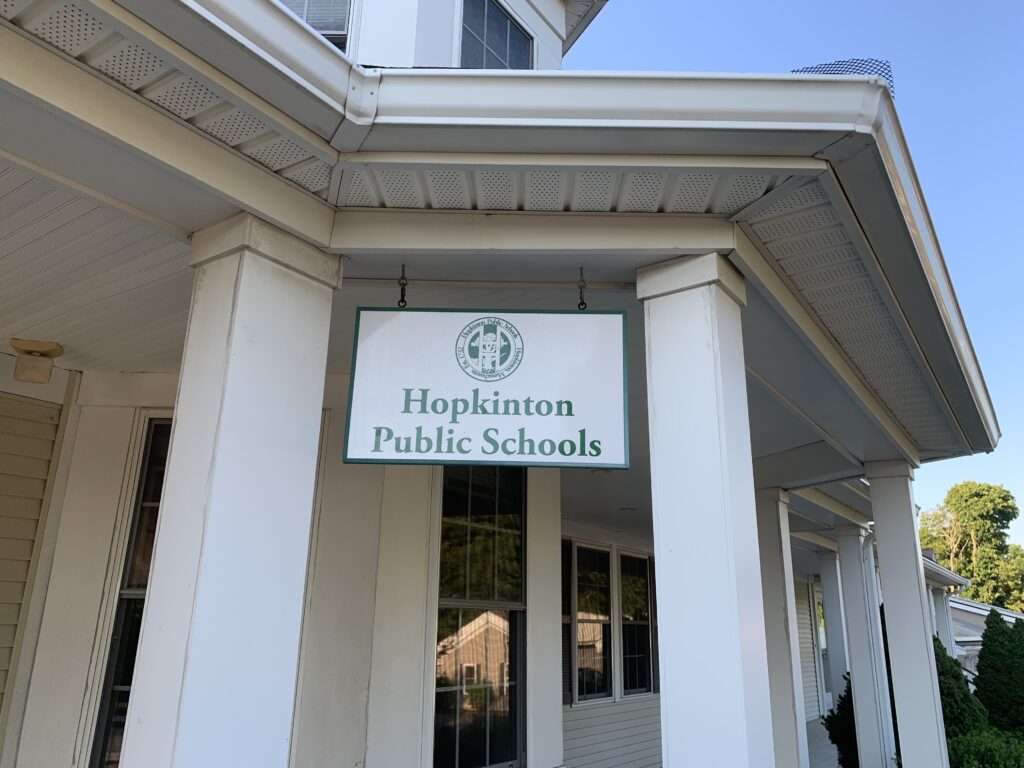At its Thursday meeting, the Hopkinton School Committee endorsed the Elementary School Building Committee’s choice of a site on Hayden Rowe Street and a design called “Village East” for the proposed Elmwood School replacement.
ESBC chair Jon Graziano and vice chair Tiffany Ostrander shared presentation duties, highlighting the process and what led to that choice.
Ostrander said the academic program could thrive in this “neighborhood style” model that feels “safe, comfortable and connecting.”
The ESBC representatives said they evaluated criteria set forth by a visioning team of community members and other stakeholders and rated categories from least to most advantageous on a color-coded matrix.
Graziano noted that site constraints were a major reason why an Elm Street site was not chosen for the proposed school.
He said nearly all the options ranged from an estimated $160 million to $170 million, with the high cost of net-zero efficiencies and inflation making an impact.
He added the numbers would change and “get tighter as we try to get this as under control as we can.”
The presentation also included talk about traffic, with Graziano pointing out that a traffic engineer was engaged earlier than normal in the process, and he felt like a Hayden Rowe site would be “doable” without affecting traffic in a major way. The engineer estimated an addition of about 170 cars going to the proposed new school.
The site is further back in the lot, which means that buses and cars can be taken off the road and line up on the property instead. Eliminating trips from Elmwood School to the other schools could also cut down on traffic, Graziano said.
Ostrander noted that there is a possibility of walking paths to make “walkability” better and potentially take some cars off the road as well.
School Committee member Lya Batlle-Rafferty, who is also on the ESBC, said that input from educators is being taken very seriously. She said that separating the gym and cafeteria was the result of talking to Hopkins School teachers, for example.
Going forward, suggestions from educators would continue to be important, Graziano said.
School Committee members praised the ESBC for its efforts to date, with vice chair Amanda Fargiano saying, “We couldn’t have asked for a better outcome.” Having served on the visioning team, she added members did a great job incorporating what the community wanted into the design so far.
Board approves three paraprofessionals
Lauren Dubeau, principal at Marathon Elementary School, requested the addition of three paraprofessionals to support the “significant special needs” of students moving into the school. The School Committee approved the request.
She noted there now are 710 students in pre-kindergarten through Grade 1, and 602 children in just K-1. Of those students, about 3 percent (19 pupils), have special needs. These could range from limited verbal and motor skills to a variety of disabilities like Down syndrome, visual and/or hearing impairments, autism and more.
“We have to respond to our students and what they need,” Dubeau said.
Director of Finance Susan Rothermich said the positions could be funded by increasing the revolving account offsets by $255,000. The cost in fiscal year 2024 would be $112,692 for the three positions. An amendment could be made to the proposed budget, reflecting that change to the revolving offset account.
High school adds, eliminates courses
In other business, the committee approved additions and subtractions of courses at the high school as presented by Principal Evan Bishop.
Bishop explained that in developing the program of studies, the priority is to put students first and offer courses they want to take in areas that interest them. Also, he likes to think the offerings are innovative and “ahead of the curve.”
He added that no funding is needed for the changes, and the school has the educators in place to teach the courses.
The new courses include Introduction to Architecture, Advanced Placement Pre-Calculus, The Physics of Sports and Topics in Biology.
Changes to the Science Fair were made as a result of the growth of the program and a desire to help “more sophisticated” projects. Corresponding courses would be Introduction to Chemistry with Research Methods for freshmen and Advanced Research Methods I for sophomores.
Advanced Research Methods II and III for juniors and seniors remain unchanged, Bishop said.
The following classes are being removed either because of lack of interest or revamping into something else: Fab Lab (visual arts), HHSTV-II, Conceptual Physics — Mechanics, Electro Magnetism and Understanding the Earth.
Travel request approved
During the last meeting, the committee postponed voting on a request for up to 14 high school students to participate in a Global Leadership Summit from July 3-15, 2024. The study tour program in Iceland, Denmark and Germany centers around the theme, The Impact of Water on Society.
Batlle-Rafferty raised concerns about the approximate cost of $7,000 per student, fearing it would prohibit many students whose families cannot afford to send them, creating inequity.
She noted on Thursday that she would not vote against the measure but didn’t want the matter to just “get lost” after a few conversations are had about it.
Superintendent Carol Cavanaugh spoke with administrators in other districts who offered suggestions like setting caps on the amounts, putting earlier timelines in place for families to raise money, establishing an account in the district for this purpose, using vouchers or just not having those types of trips anymore.
The board decided to put it in the financial aid policy when it is revisited at the end of the year.
“We want this to feel accessible for students,” Batlle-Rafferty said. She added it would be important to come up with ways to make it a possibility for students from all financial circumstances.



















0 Comments